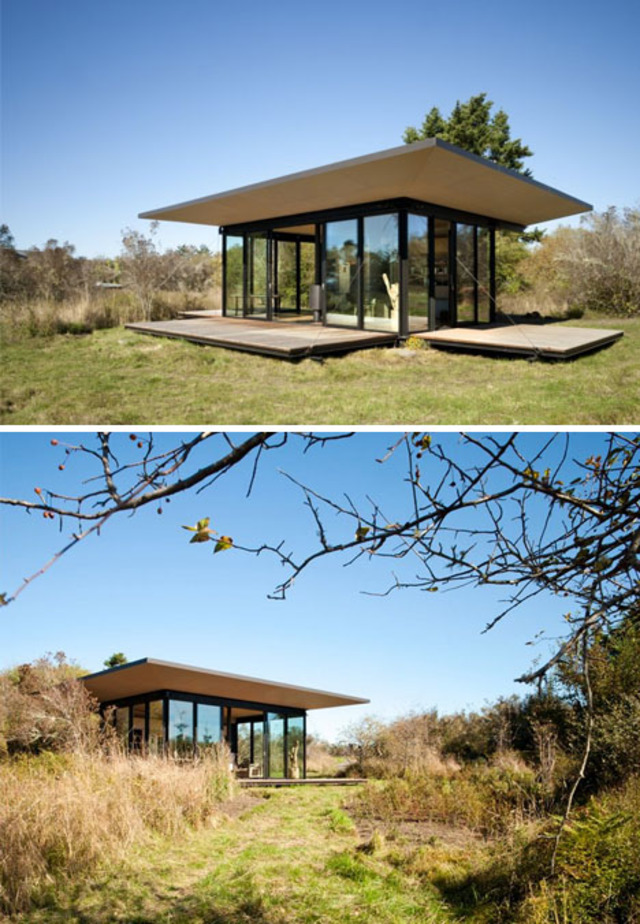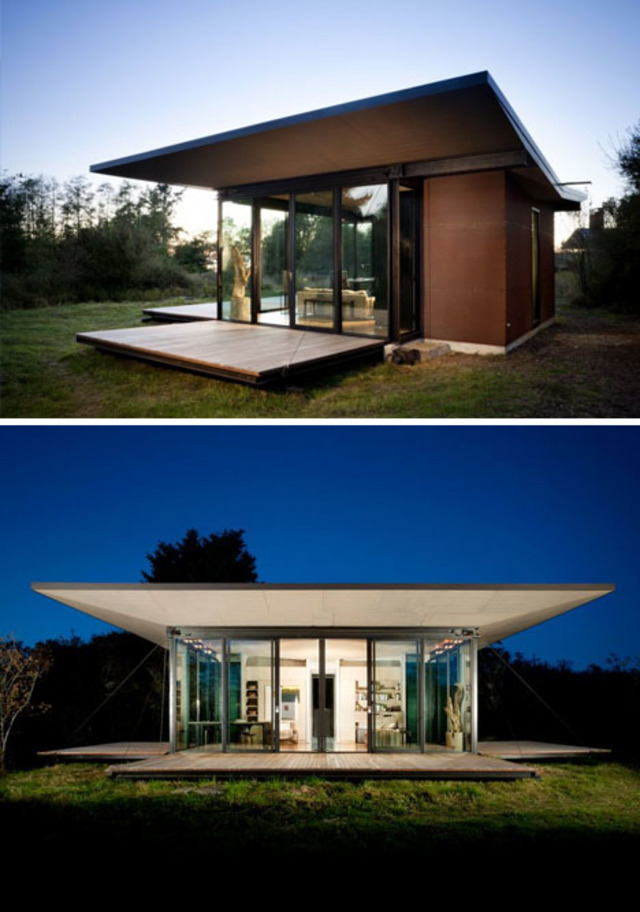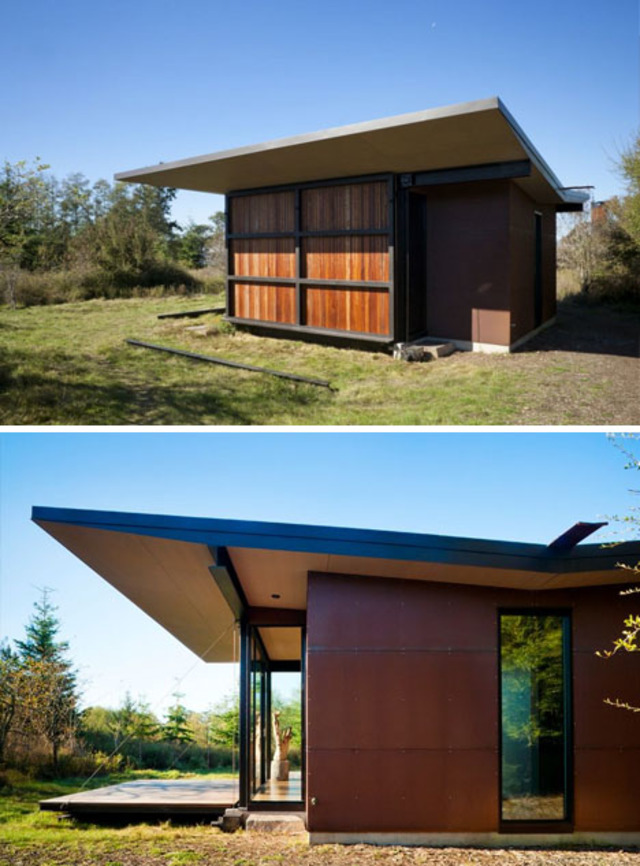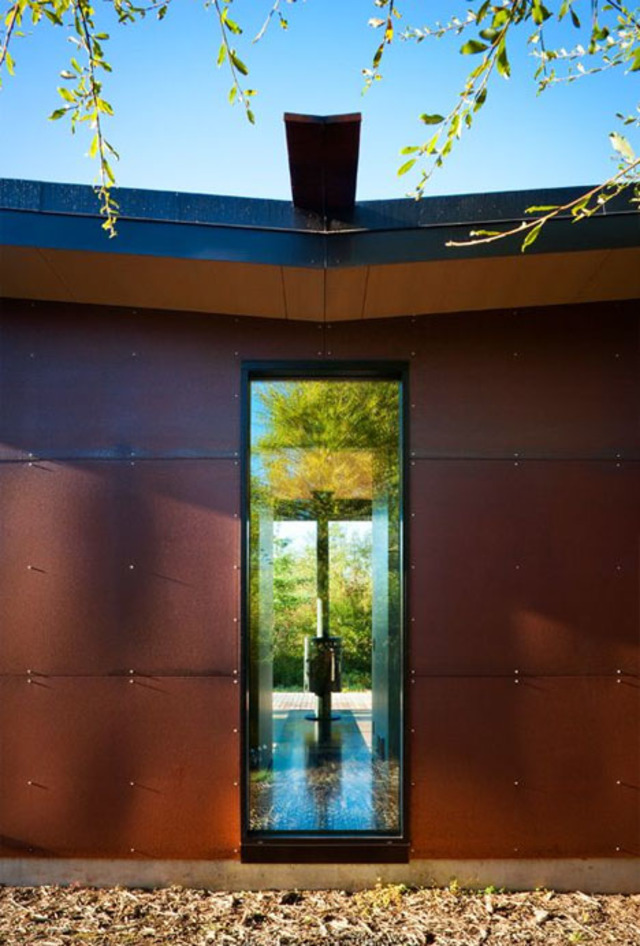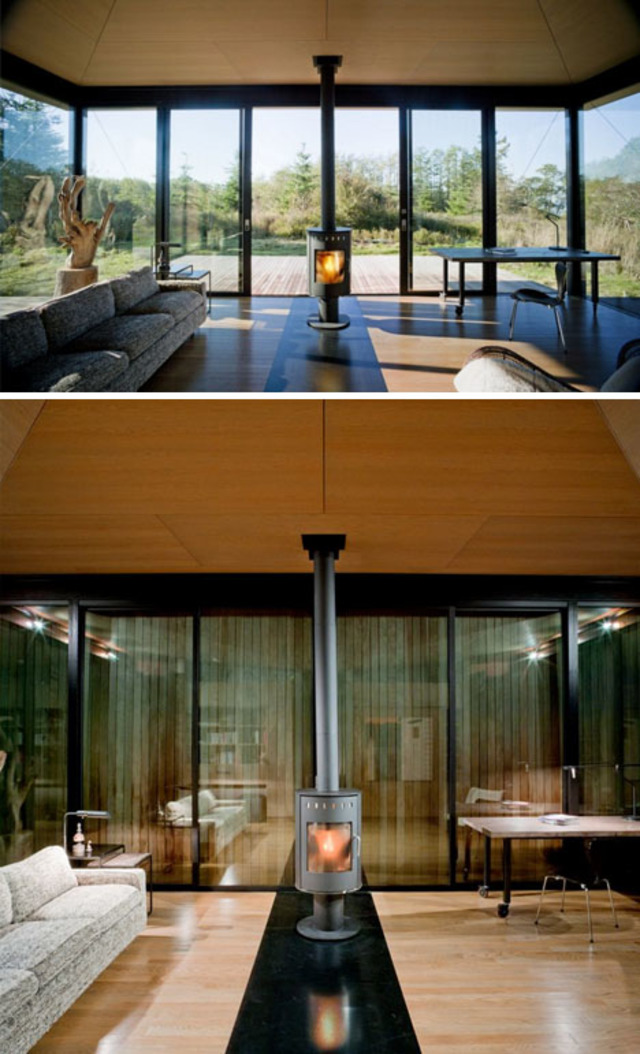Flip-Down Walls Reveal Writer’s Cabin

Open when you want to use it, closed when you’re away: this little vacation house is a security paranoiac’s dream. The False Bay Writer’s Cabin by Olson Kundig Architects is just one example of this Seattle-based firm’s exemplary work in organic materials and unusual transforming shapes.
It may be a rather diminutive retreat, but it serves its purpose perfectly: fold-up sides keep it secure when not in use, while doubling as privacy screens, light blocks and thermal barriers as desired.
“This 500 square foot island cabin serves as a private writer’s retreat and guest cottage. The owners wanted a space that would feel totally connected to the natural landscape, allowing them to take full advantage of the mild climate, scenic views and the proximity to wildlife; at the same time, they needed the cabin to be easily secured when not in use.”
Essentially a glass house on the inside, folding down three of the four exterior walls gives the occupant a nearly 360-degree connection to the surrounding context — gorgeous natural scenery.
These movable wall sections in turn become exterior decks when lowered, and are easily raised via ” a hydraulic system of wires, rope, pivoting sheaves and lead blocks, that serves as shutters.”
The steeply-sloped roof simply drains water toward the back, and extends out on the other three sides to provide cantilevered cover and shade, with minimalist (lack of) detailing that fits with the rest of the structure.
Inside, a 180-degree rotating fireplace likewise accommodates directional decisions about where one wants to face – into distant views or into the nearby wildlife-populated brush. The primarily single-space strategy also accommodates a kitchenette and small bathroom. All in all, it’s a superb example of transforming architecture that’s particularly well suited to its environment.
“It is intended to be a shelter of extremes, open or closed. In order to feel cold, you have to feel hot; in order to feel safe, you have to feel at risk. Contrast is the true measure of a complete experience.” —Tom Kundig, Design Principal





